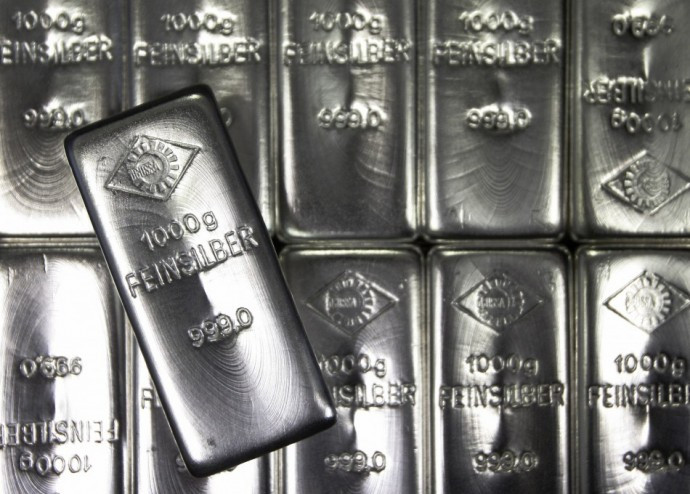Commodities round-up: Silver futures soar while crude oil drops as Opec cut chatter fades
Hedging calls and optimism over industrial usage continued to support silver futures.

Precious metals rallied on Friday (30 September) after silver futures spiked for a second successive session, while oil benchmarks headed lower as market chatter about a possible Opec crude production cut subsided in the absence of concrete details.
At 3.14pm BST, the Comex silver futures contract for December delivery was up 1.01% or 31 cents to $19.51 an ounce. Concurrently, Comex gold was up 0.31% or $4.10 to $1,323.90 an ounce, while spot platinum was up 0.26% or $2.64 to $1,030.19 an ounce.
Hedging calls and optimism over industrial usage continued to support silver futures. The precious metal has rallied 39% so far into 2016.
Fawad Razaqzada, market analyst at Forex.com, expects silver to continue outperforming gold. "The long-term trend has turned more favourable for bullish speculators this year after silver futures broke through a major downward-sloping trend line in February before staging a sharp rally as the dollar's rally came to a halt.
"Silver does need to break through the $20 an ounce level soon if it is to extend its gains meaningfully now. Should it be able to do so, which is our base case scenario, then at least a revisit of this year's high at $21.10/15 area would then become very likely."
Away from the precious metals market, oil benchmarks headed lower after Opec's decision to cut output buoyed the market initially, only for doubts to surface over the immediacy and extent of the planned cuts.
Overnight, the cartel said it had agreed to limit production to a range of 32.5 million to 33 million barrels per day (bpd) led by the Saudis. However, details remain sketchy with ministers saying the cartel would not decide on targets for each country until its next meeting at the end of November.
At 3.26pm BST, the Brent front month future contract for December delivery was down 0.30% or 16 cents at $49.10 per barrel, while the West Texas Intermediate slid 0.29% or 19 cents to $48.02 per barrel.
Jade Fu, investment manager at Heartwood Investment Management, felt Opec's announcement is not a game changer. "We think it is too early to tell what the actual impact will be on supply and demand, given no details have been announced yet. Countries have to agree on how to implement the quota and by how much each individual country will cut their supply.
"Negotiations will be challenging. The agreement excludes Iran, which is trying to increase market share having returned to the world oil market after years of economic sanctions. However, other countries are also trying to increase their market share, such as Iraq and Libya, which may lead to potential areas of contention."
Meanwhile, Fitch Ratings said Opec's move supports a slow oil price recovery rather than a strong rebound. "The oil production target signals the potential for greater coordination among Opec members, but the target itself is largely symbolic. The announcement supports our view that oil prices will continue their recovery, but does not make a strong rebound materially more likely."
However, the ratings agency added that the move reduces downside risk to oil prices and reinforces its expectation that the stabilisation and recovery since the beginning of the year will continue. "This is reflected in our forecasts for average prices for Brent and WTI of $45 per barrel in 2017 and $55 per barrel in 2018."
Opec ministers will meet next on 30 November in Vienna, Austria.
© Copyright IBTimes 2025. All rights reserved.






















